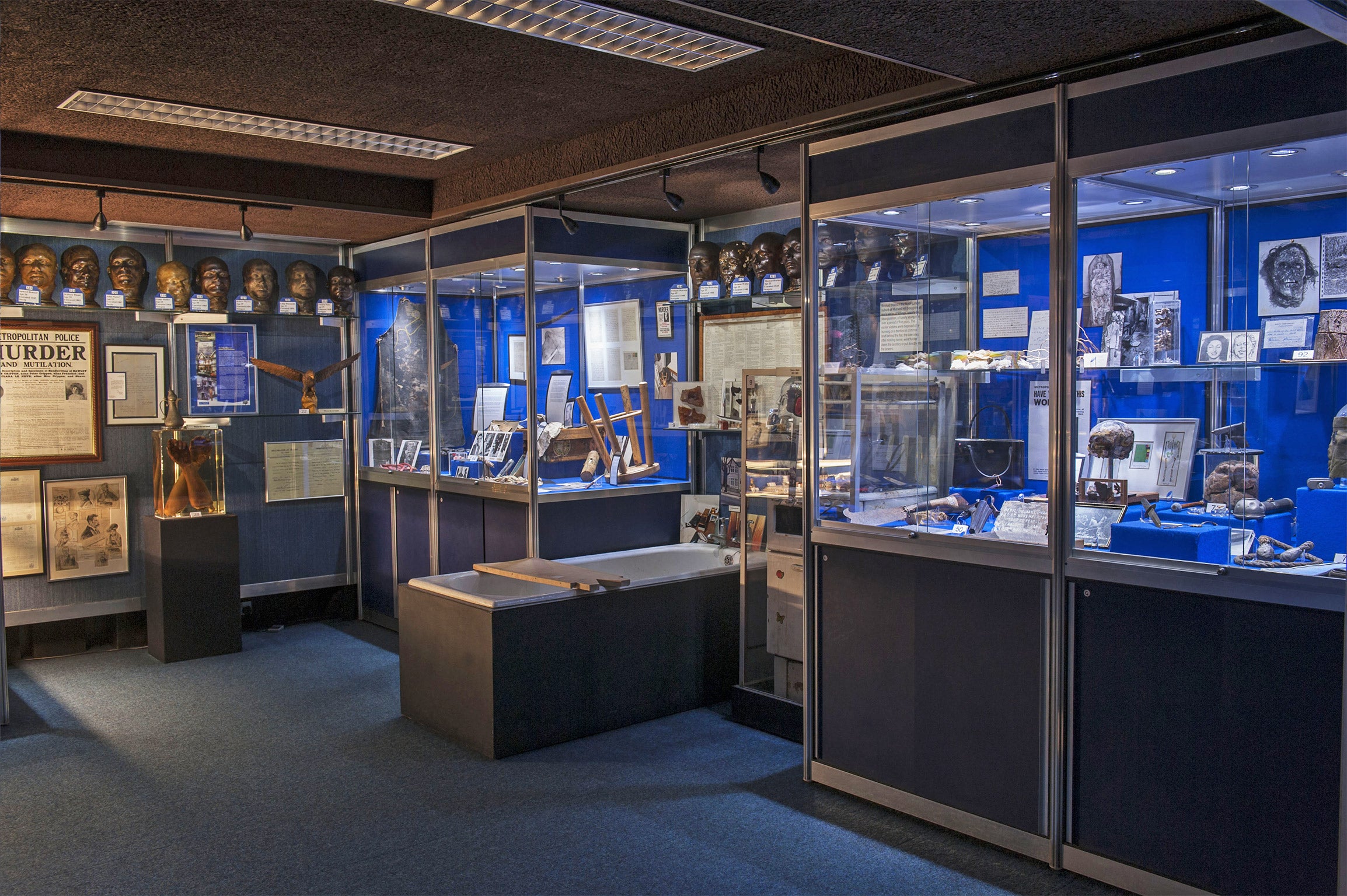Secrets of the Met Police’s ‘Black Museum’ now open to public
The Metropolitan Police’s Crime Museum was hidden until now from public view

Masks worn by the first criminals in Britain convicted for murder by fingerprint evidence have been unveiled among the objects going on display for the first time from the Metropolitan Police’s Crime Museum when an exhibition opens to the public later this year.
A selection of around 500 items from the hoard of 20,000 currently held in room 101 at the Met’s Victoria Street headquarters – many of them grisly and relating to some of Britain’s most notorious crimes – will be shown in “The Crime Museum Uncovered” at the Museum of London in October.
Among them will be the death mask of the executed criminal Robert Marley from 1856, as well as execution ropes and even items used by John Haigh, the infamous “Acid Bath Murderer”, in 1949.
In pictures: The Metropolitan Police’s Crime Museum
Show all 12Until now only serving police officers, and visitors by appointment, have been allowed to visit the “Black Museum” collection, which was set up in 1874 to train police officers and is one of five Met Police museums.
It is understood the police will study the response to the six-month show and consider whether to make the display more permanent, after the plans were first disclosed in The Independent last year.
The exhibition will feature objects relating to about 26 individual cases, dating as far back as 1905 with masks used by the Stratton brothers, who robbed and murdered an elderly tradesman. They were sentenced to death after a bloody fingerprint was found.
The most recent exhibit comes from the “Spaghetti House Siege”, when hostages were held in a west London restaurant in 1975.
There is also a briefcase with a syringe and poison that Ronnie and Reggie Kray intended to use for witness intimidation and possessions recovered from the hideout of the Great Train Robbery gang. Among the more bizarre objects is a cushion embroidered by Annie Parker – who was imprisoned numerous times for drunkenness in the 19th century– using her own hair.
Objects related to counterfeiting espionage will be on display too, including a talcum powder tin that concealed microfilm, used by members of a Russian spy ring.
The show, which is being held with the support of the Met and the Mayor of London’s office for policing and crime, will also include a recreation of the Crime Museum from late 19th-century sketches. Julia Hoffbrand, co-curator of the exhibition, said they used pictures including one from The London Illustrated News in 1883 for the exhibit.
She said: “We want to give people the sense of how it started, how it was really cluttered. It’s evoking the feel and atmosphere from the start of the crime museum.”
Subscribe to Independent Premium to bookmark this article
Want to bookmark your favourite articles and stories to read or reference later? Start your Independent Premium subscription today.
